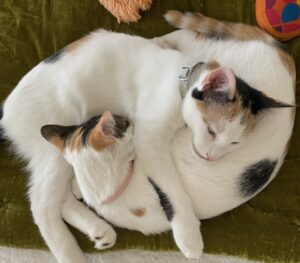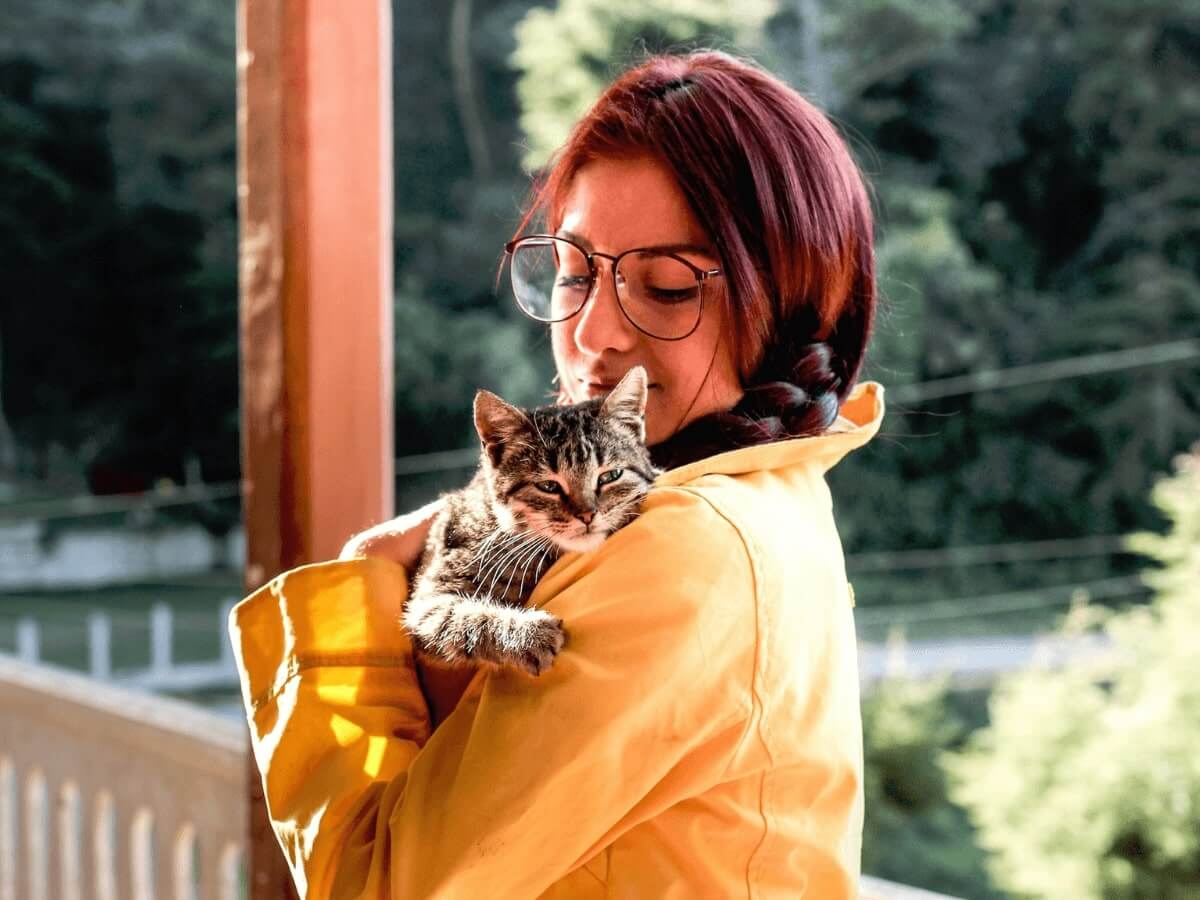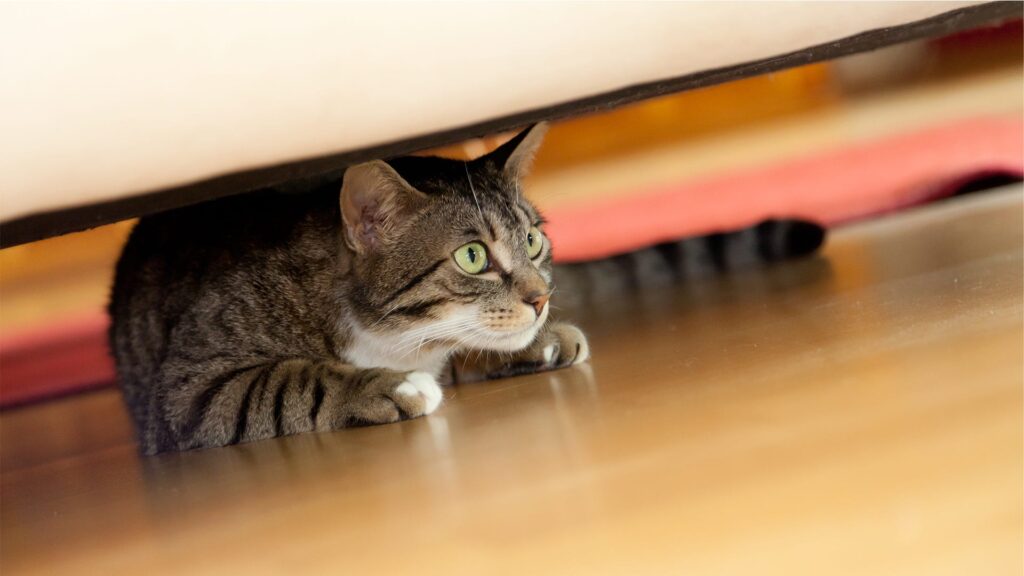Separating bonded cats can be challenging, but it can be done successfully with patience and proper preparation. Separating bonded cats can be a challenging task, especially when they have formed a close bond with each other.
However, there are situations where separating them becomes necessary, such as when one cat becomes aggressive towards the other or when one cat requires medical treatment that may disrupt their bond. By following a careful and systematic approach, you can work towards successfully separating bonded cats.
This article will outline the necessary steps and considerations to ensure a smooth transition for both cats involved. Whether you are facing this situation or simply curious about the process, read on to discover everything you need to know about separating bonded cats.
Contents
- 1 Understanding The Bond Between Cats
- 2 Signs Of Bonded Cats
- 3 Reasons For Separating Bonded Cats
- 4 Preparing For Separation
- 5 Introducing Individual Routines
- 6 Managing Separation Anxiety
- 7 Seeking Professional Help
- 8 Successful Reintegration
- 9 Long-term Maintenance Of Separation
- 10 Frequently Asked Questions On Everything You Need To Know About Separating Bonded Cats
- 11 Conclusion
Understanding The Bond Between Cats
Bonding between cats is known to be a unique and fascinating aspect of feline behavior. Cats form strong bonds with each other, often referred to as “bonded cats”. This bond is characterized by mutual affection, companionship, and a sense of security. It is important for cat owners to understand the significance of bonded cats in order to provide them with the care they need.
Bonded cats rely on each other for emotional support and reassurance. They engage in various behaviors such as grooming, sleeping, and playing together, which helps strengthen their bond. Additionally, bonded cats may exhibit signs of distress when separated.
Creating an environment that supports bonded cats is crucial. This includes providing ample resources such as food, water, litter boxes, and comfortable resting areas for each cat. It is also important to introduce any new members to the bonded pair carefully.
In conclusion, understanding the bond between bonded cats is essential for their well-being. By recognizing their unique relationship and providing a nurturing environment, cat owners can ensure the happiness and harmony of their feline companions.
Signs Of Bonded Cats
Bonded cats have a unique and special relationship, and recognizing the signs of a bonded cat pair can help you better understand their bond. One of the signs of a bonded cat pair is their close physical proximity. They often cuddle, sleep, and groom each other. They may also engage in mutual play and chase each other. Another sign is their synchronized behavior, such as eating together or using the litter box at the same time. Bonded cats also communicate through body language, such as rubbing against each other, touching noses, or licking each other. These behaviors and interactions indicate a strong bond between bonded cats. If you have a pair of bonded cats, it is important to provide them with plenty of opportunities for interaction, play, and bonding to maintain their strong bond.
Reasons For Separating Bonded Cats
Separating bonded cats may be necessary for a variety of reasons, including health and medical issues. Bonded cats are often very close and rely on each other for companionship and emotional support. However, when one cat becomes sick or develops a medical condition, it may be necessary to separate them in order to provide proper medical care and prevent the spread of illness.
Behavioral issues can also arise in bonded cats, and separating them can help address these problems. Sometimes, one cat may become aggressive towards the other, leading to fights and potential injuries. By separating them, you can work on addressing the behavioral issues and create a safer environment for both cats.
Another important reason to separate bonded cats is the need for individual attention and socialization. Bonded cats may become overly dependent on each other and may not learn to interact with other cats or humans. By separating them, you can ensure that each cat receives the necessary attention, socialization, and mental stimulation.

Credit: rnrpets.org
Preparing For Separation
A crucial step in separating bonded cats is to evaluate their individual needs and living arrangements. Consider their personalities, preferences, and any unique requirements they might have. This will help you create suitable separate spaces for each cat. It’s important to ensure that each cat has their own safe and comfortable area where they can retreat to. This can include separate rooms or designated areas within a room.
Once you have evaluated the cats’ needs, it’s essential to provide them with separate spaces and resources. This includes providing individual litter boxes, scratching posts, and beds. Each cat should have their own food and water bowls, placed in separate areas to avoid potential conflicts. Additionally, ensure that there are plenty of hiding spots and perches available for each cat to claim as their own.
As you prepare for separation, it’s important to gradually reduce shared activities and time together. This can help ease the transition and minimize potential stress. Start by gradually decreasing the amount of time the cats spend together, and gradually increase the amount of time they spend apart. Monitor their behavior and adjust accordingly. By implementing a gradual separation process, you can help the bonded cats adjust to their new living arrangements with minimal disruption and anxiety.
Introducing Individual Routines
Separating bonded cats can be a challenging process, but establishing individual routines can help ease the transition. One important aspect is setting up separate feeding and play schedules for each cat. This ensures that they have their own space and time to enjoy their meals and play without competition or stress.
Another essential factor is providing individual attention and enrichment for each cat. Spend quality time with each feline, engaging in activities they enjoy and providing toys and accessories that cater to their specific needs.
Lastly, it is crucial to monitor their adjustment to the new routines closely. Keep an eye on their behavior and well-being, looking for signs of stress or discomfort. Make any necessary adjustments to the routines to ensure that both cats are thriving in their separate environments.
Managing Separation Anxiety
Separation anxiety can be a significant challenge when it comes to managing bonded cats. Identifying signs such as excessive vocalization, destructive behavior, and litter box issues is crucial. Techniques for reducing stress and anxiety can help alleviate these problems. Gradual reintroduction and socialization can play a vital role in helping cats adjust to being separated. Slowly exposing them to each other’s scents and using positive reinforcement can promote a positive association. Providing each cat with their own resources like food, water, and litter boxes can also help reduce competition and stress. It’s important to monitor their behavior closely during the separation period to ensure their well-being. By taking these steps, cat owners can effectively manage separation anxiety and create a peaceful and harmonious environment for their furry companions.
Seeking Professional Help
Separating bonded cats can be a challenging and emotionally charged process, and seeking professional help can greatly benefit both you and your feline companions. Knowing when to consult a veterinarian or animal behaviorist is crucial in ensuring a smooth transition for your cats.
Professional guidance provides numerous benefits during the separation process. Experts can assess the cats’ behavioral and emotional needs, providing valuable insights and tailored advice. They can also help create a personalized plan that takes into account each cat’s unique personality and preferences, promoting a more successful separation.
In many cases, professional intervention is necessary when there are signs of aggression, anxiety, or other concerning behaviors. By consulting experts, you can address these issues promptly and effectively, ensuring the well-being and happiness of both cats.
| Seeking Professional Help |
| When to consult a veterinarian or animal behaviorist |
- Assessment of behavioral and emotional needs
- Personalized plan for each cat
- Prompt intervention for aggression or anxiety
Developing a tailored plan for the cats’ specific needs:
- Considering individual personalities and preferences
- Promoting a successful and harmonious separation
- Ensuring the well-being and happiness of both cats
Successful Reintegration
Determining readiness for reintroduction: Before attempting to reintroduce bonded cats, it is important to assess their readiness for this step. Look for positive body language such as relaxed postures and friendly behavior during supervised visits. If both cats show signs of calmness and curiosity, they may be ready for the next phase.
Supervised interactions and gradual reintroduction: Begin the reintroduction process by allowing the bonded cats to see and smell each other through a door or barrier. Slowly progress to supervised face-to-face interactions in a neutral territory. Monitor their behavior closely, intervening if necessary, and gradually increase the duration of these supervised sessions.
Establishing a harmonious living arrangement post-separation: Once the bonded cats have successfully reconnected, it is important to create a harmonious living environment. Provide separate resources such as litter boxes, food bowls, and resting areas to minimize any potential conflicts. Regular play and interactive sessions will help strengthen their bond and alleviate any stress or tension.
Long-term Maintenance Of Separation
Separating bonded cats can be a challenging process, but long-term maintenance is equally important to ensure the well-being of both cats. Maintaining separate spaces and resources is crucial in preventing conflicts and reducing stress. Each cat should have its own designated area with individual litter boxes, feeding stations, and hiding spots. This promotes a sense of security and reduces the chances of territorial disputes. Providing individualized attention and care is essential to ensure both cats feel loved and attended to. Spend quality time with each cat separately, engaging in play and providing affection. Lastly, regular assessment of the cats’ well-being and adjustment is necessary. Keep an eye on their behavior, appetite, and overall adjustment to the separation. If any issues arise, address them promptly to ensure both cats remain happy and healthy.
Frequently Asked Questions On Everything You Need To Know About Separating Bonded Cats
Is It Okay To Split Up Bonded Cats?
Splitting up bonded cats is not recommended as it can cause emotional distress and behavioral issues. It is better to find solutions to facilitate their coexistence or rehoming them together if necessary.
Do Cats Get Sad When Separated From Other Cats?
Cats can become sad when separated from other cats since they are social animals. The absence of feline companionship can make them feel lonely and anxious.
Is It Cruel To Separate Two Cats?
Separating two cats can be cruel as it disrupts their social bond and may lead to stress, anxiety, and behavioral issues. It’s important to consider their emotional well-being before making any decision.
Is It Okay To Separate A Bonded Pair Of Kittens?
Separating a bonded pair of kittens is not recommended as it can cause emotional distress. Kittens form strong attachments, so it’s best to keep them together to promote their well-being and happiness.
Conclusion
Separating bonded cats can be a challenging process, but with patience and careful planning, it can be done successfully. Remember to provide each cat with their own space, gradual introductions, and plenty of positive reinforcement. By following these guidelines, you can help ensure that both cats adjust well to their new living arrangements and continue to thrive in their individual environments.

Katie Lindsey is a passionate cat lover and founder of Cats Solution, a comprehensive resource for all things feline. With a lifelong love for cats and extensive knowledge in their care and behavior, she provides expert advice and solutions to cat owners. Through her website, Katie fosters a supportive community where cat enthusiasts can find guidance and heartwarming stories. A dedicated advocate for animal welfare, Katie also promotes responsible pet ownership and adoption. Join her on this purr-fect journey celebrating the joy of feline companionship.



